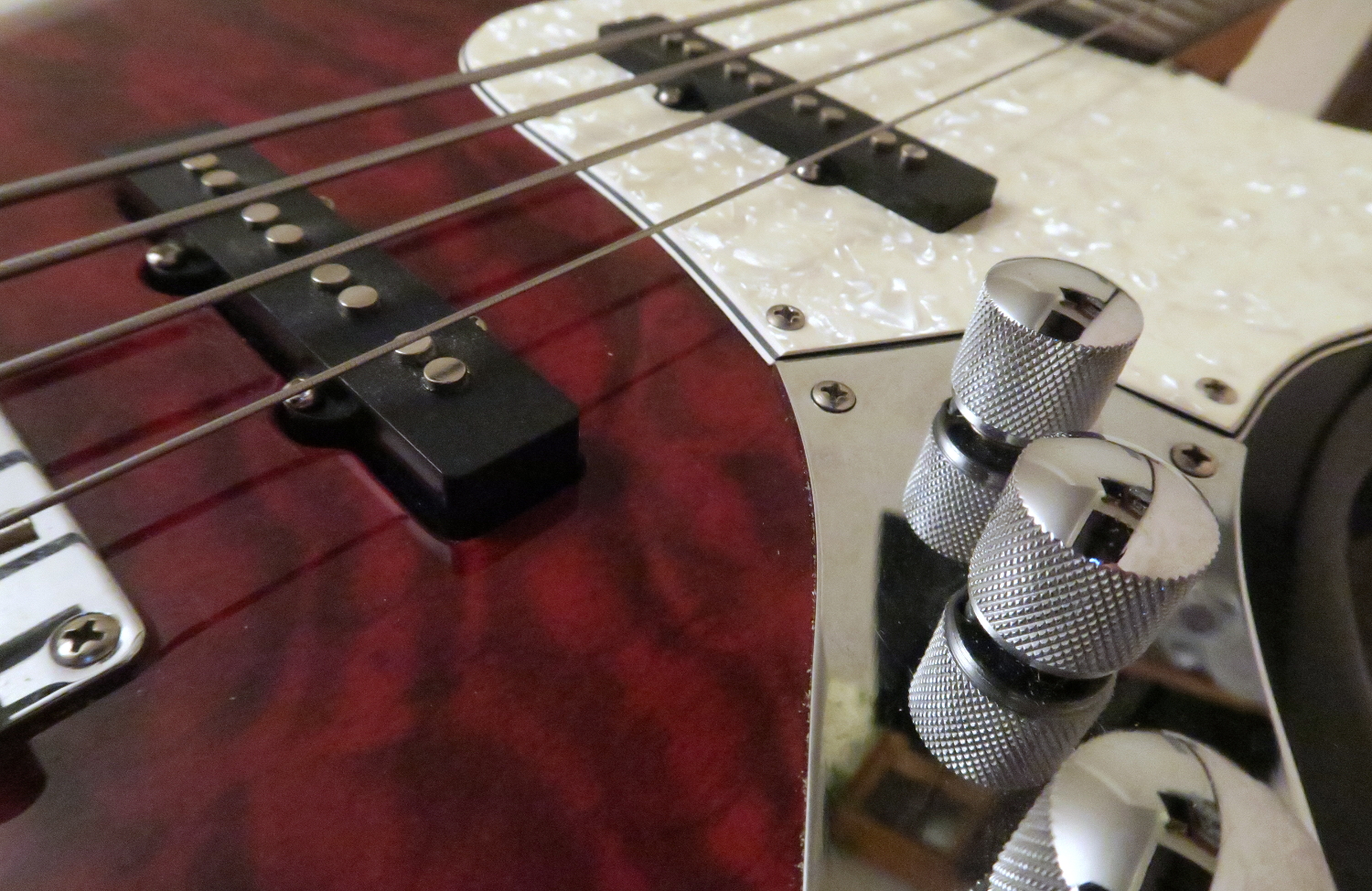
Ever wonder how many strings does a guitar have? There are many different kinds of guitars in production.
They all vary in sound and not all of them have six strings like the standard electric and acoustic guitars most people are familiar with.
There are bass guitars with four strings, 7-string guitars, 8-string guitars, basses with anywhere between 5 and 8 strings, 10-string guitars, and even 12-string guitars!
Most string musicians play either a four-string bass guitar or a 6-string guitar.
The notes on each type of guitar are all different and the amount of strings you would need on a guitar depends on the kind of music that the guitar will be used to play.
Let’s start with six-string guitars, the standard for playing rock, blues, and even some jazz.
These guitars’ strings are E-A-D-G-B-e, going from sixth string to first string.
The sixth string is the thickest string and the first string is the thinnest string. Most rock and metal bands have two six-string guitarists.
One is a distortion guitarist playing the harmony of the song and then an overdriven or another distortion guitar playing the melody, and sometimes also a guitar solo.
Four-string basses are found in every rock or metal band as well as many R&B and gospel groups.
Sometimes though, a band has only one guitarist and a bassist (a notable example: Nirvana).
Basses have the strings: G-D-A-E in order from fourth string to first string (top to bottom).
Bass strings are thicker and bassists play low notes to fuse with the melodies and harmonies of songs.
Seven-string guitars have one extra guitar string, which is added to the thicker end after the sixth string (or on the top of the strings if you are looking at a guitar).
Seven-string guitars are prevalent in traditional Russian and Brazilian music, so you find bands using these guitars who derive inspiration from cultural music.
The musicians I am mainly familiar with who play seven-string guitars are in heavy metal bands.
Example bands and guitarists who have used these guitars are Polish death metal band Behemoth, Steve Vai, and Sepultura.
Sepultura specifically used seven-string guitars in their release, “Roots”, because it was heavily inspired conceptually by traditional Brazilian music and culture (Brazil is where Sepultura are from).
The tuning for a seven-string guitar is in B Standard tuning or: B-E-A-D-G-B-E.
Eight-string guitars have two extra strings, obviously, and are the standard for lap steel and pedal steel guitars.
Lap steel guitars are played differently than 7- and 6-string guitars in that the player changes pitch by pressing a glass or metal bar against the strings instead of pressing their fingers down on the strings over the fretboard and the guitar lies flat on the player’s lap or on a table top.
These guitars are used in Hawaiian, country, and jazz music. The standard tuning is based either in the E9 chord, known as the “Nashville” style, or with jazz configurations, the C6 chord.
There are also solid-body eight-string guitars and semi-acoustic guitars (hollow body guitars).
There are also a variety of extended range bass guitars that include either five strings, six strings, or seven strings.
There are also 8-string bass guitar models, but they are not categorized under the “extended range bass guitars” label, rather they are known as “double basses”.
The five-string bass guitar has an added high C string and was the first variation on the standard 4-string bass guitar.
The five-string bass guitar has been used by John Paul Jones from Led Zeppelin, particularly during their 1973 tour on the songs “Black Dog” and “The Song Remains the Same” for example. It’s also been utilized in certain Motown releases.
The six-string bass guitar came out shortly after the first five-string bass guitar (called Fender V).
It’s popularly known as the Fender VI, following the design of the six-string bass manufactured by Danelectro in 1956, and has the strings: E A D G B E, which is an octave lower than the standard tuning.
The Fender VI has been used heavily by Robert Smith of the Cure, and can be heard and seen in the music videos for the Beatles’ “Let it Be”, “Hey Jude”, and “Helter Skelter”.
Musician Anthony Jackson had what he called a “contrabass” made.
The contrabass has six strings as well and is based off the six-string bass. The strings are B-E-A-D-G-C.
Jackson has played it with a variety of musicians as their touring bassist or a contributor to their albums.
There are also guitars with 10 strings. These guitars are used to play a wide range of music and come in a lot of different models.
Many of these kinds of guitars are used for folk, classical, and popular music.
There are harp guitars, which are not fretted (so the frets are not used to change the pitch), they are simply either plucked or strummed.
Harp guitars are mainly antique relics from the 19th century and are used to recreate music from that era.
There are also special 10-string guitar models designed to play jazz and Hawaiian music. The Viola guitar also has ten strings and is played in Brazilian folk music.
There are numerous other types of ten-string guitars intended for various musical purposes, many of which are custom models created for a very specific style of playing.
12-string guitars were first heard by the American public in the intro chord of the 1963 hit song “Walk Right in” from The Rooftop Singers.
They have what is called a “chorus effect” because the strings are aligned together in pairs that are usually played together.
In actuality, there are two different sounds being played at the same time, but they sound like they are coming from just one string, but with an echo.
12-string guitars have been used in a lot of popular music, but they are mostly a staple of 1960’s style folk music.
In conclusion, a guitar can have anywhere between four and twelve strings, depending on what kind of guitar it is. There are a variety of different models, all of which have different sounds because they all have different purposes.
Most people are familiar with the standard six-string guitar, but the prevalence of these other variations on guitar strings can be heard within popular music and traditional cultural and folk music genres.
Many of us have heard a 12-string guitar or a 7-string bass and we just haven’t realized it.
I hope this has answered your question, “how many strings does a guitar have?”
Originally posted 2023-01-06 15:31:31.


